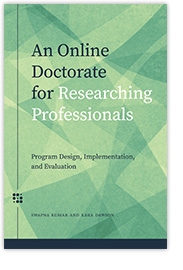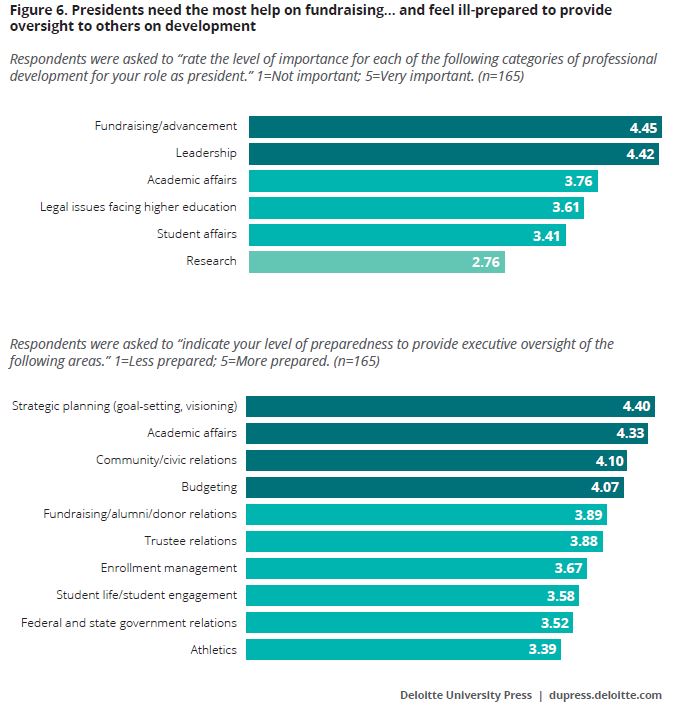You have /5 articles left.
Sign up for a free account or log in.

Deloitte University Press
Everything about the college presidency today seems to be unsettled, including the career pathways new presidents take on the way to the top job on campus.
Current presidents face a slew of new challenges as demographics drive colleges and universities to enroll increasingly diverse student bodies with new sets of needs, as financial constraints impose harsh realities on institutions, and as technology threatens to upend the campus and the workplace. At the same time, the professional ladders leaders climb on the way to becoming presidents is changing -- just as a large number of long-serving presidents are expected to soon retire.
Yet presidents too often find themselves running from crisis to crisis or falling into short-term thinking. As the job pressures mount, and as presidential tenures shorten, leaders are looking for quick wins that will allow them to show their boards of trustees or their next campus that they have a record of getting things done.
It all adds up to a college presidency that lacks cohesion, according to a new report released today titled "Pathways to the University Presidency." The report, a joint effort from the Center for Higher Education Excellence at the auditing and consulting firm Deloitte and from the Center for 21st Century Universities at Georgia Tech, says that today’s presidents need to be constantly shifting in their roles and able to exhibit a range of skills. They need to be able to tackle everything from raising money to building new types of institutional partnerships.
“There is a growing range of pressures and constituencies and stakeholders that demand a much, much greater balance across a wide variety of activities and skills,” said Cole Clark, Deloitte’s executive director for higher education and one of the report’s co-authors.
The report’s authors used several different research techniques to compile a wide-ranging look at the college presidency, its future and the talent pools that will feed it. They surveyed college presidents, collecting responses from leaders at 112 private four-year institutions and 51 public four-year institutions. They interviewed presidents and trustees. They analyzed 840 sitting presidents’ curriculum vitae to gain a sense of where current presidents have worked in the past.
Their resulting analysis provides new insight into the state of the college presidency and its future direction at a time when many are eagerly awaiting another much-looked-to report on the topic, the American Council on Education’s American College President study. That study is due out in late spring or early summer, five years after the last edition sparked discussion of a soon-to-come wave of retirements.
The Deloitte and Georgia Tech report’s analysis of CVs yielded an interesting list of what authors dubbed higher education’s “talent factories” -- campuses where numerous current presidents previously worked as faculty members, deans, provosts or senior staff members. The list includes many of the Ivy League institutions one would expect: Brown, Cornell, Harvard, Princeton and Yale Universities; Dartmouth College; and the University of Pennsylvania. It also includes some other prestigious institutions and top public institutions that might be expected, such as the University of Minnesota, Twin Cities; Indiana University in Bloomington; the University of Michigan, Ann Arbor; Johns Hopkins University; Texas A&M University and the University of California, Berkeley.
But authors noted a pair of surprise appearances on the list: Arizona State University and Georgia State University. Both are well-respected institutions that don't embrace typical models of higher education.
The list suggests opportunities for future research to try to determine why certain institutions turn out a high number of presidents, Clark said. Authors weren’t able to delve into that question in the current report, which only looks at CVs from a quantitative standpoint.
Authors were able to conclude that the pathways leaders are taking to the presidency are becoming more varied. The provost’s office is no longer the sole gateway to the presidency. Instead, academic deans are often jumping the provost’s office and being hired as presidents.
But the dean-to-president move is much more common among men than women -- a difference report co-author Jeffrey J. Selingo noted when he briefly previewed the report’s findings during the American Council on Education’s annual meeting in March. Male presidents had made the jump from dean 43 percent of the time, while women presidents did so 18 percent of the time, according to the report.
The report also says that presidents who did not serve as provosts tended to have become presidents more recently, meaning that particular pipeline is probably a new trend. And it says that presidents who hadn’t been provosts tended to work at smaller institutions. About two-thirds of presidents in the report’s CV analysis who had never served as provosts led institutions with fewer than 5,000 students.
Provosts, meanwhile, are increasingly seen as leaders who bring a different skill set than presidents. Provosts are believed to be focusing “inward and down” -- meaning they work with faculty members and students on academics. Presidents, in contrast, are thought to be looking “up and out” -- dealing more with relationships with governing boards, the public, political leaders and alumni.
Surveyed presidents were asked to rank the importance of different skills needed when they started their jobs. They ranked being an academic and intellectual leader last. They ranked being a strategist as the top skill, followed by being a communicator and storyteller, being a fund-raiser, being a collaborator and having “financial and operational acumen.”
Report authors noted a difference in the way new presidents and veteran presidents viewed themselves. New presidents tended to see themselves in a financial and operational light and as leaders needing to get things done. Veterans tended to see themselves as academic leaders in a collegial and intellectual higher education community.
Veterans and new presidents also differed in who they believe will replace them when they leave their jobs. Veteran presidents who have held their jobs for more than 15 years tend to believe a provost is likely to succeed them. Presidents with less than a decade on the job believe their successors are more likely to come from the private sector.
However, presidents agreed regardless of the length of their tenures -- and the size of the institutions they led -- that fund-raising is a major part of the job. Many also agreed that they felt unprepared for the task of raising money. Surveyed presidents were asked to say how prepared they were to oversee different campus areas. They rated fund-raising and alumni/donor relations below areas like strategic planning, academic affairs and budgeting.
“They call that out as an area where they feel like they need the most leadership development and training,” Clark said.
But the report’s authors noted that being a college president has traditionally involved on-the-job training, instead of the formal training that many private-sector chief executive officers receive in business school.
For instance, many presidents said they wanted leadership training. Yet presidents did not feel comfortable receiving such training.
“Leadership development is stigmatized in higher education,” the report quotes one anonymous public university president saying. “There is knowledge out there that can help people become better leaders, but it’s vilified among faculty members who don’t understand it.”
Almost two-thirds of presidents reported having coaches or mentors to prepare them for their positions. But only one-third of those surveyed said they still received coaching to help them as they continued to navigate the job.
College and university presidents could use another form of help, according to the report: help setting long-range goals. Many presidents feel pressure to focus on the short term, which can cause them to make decisions like tying academic programming to the current job market, forming enrollment plans that ignore long-term demographic shifts and drumming up quick fund-raising dollars instead of emphasizing larger commitments over time.
The fact that college presidents are increasingly jumping from job to job has caused other issues, the report says. Strategic plans are being rewritten frequently, and presidents are often ending up at institutions that don’t fit their interests or backgrounds. The report is blunt in labeling some administrators “career climbers” who apply for presidencies at many different types of institutions only because they want to be a president somewhere -- anywhere.
The report is also critical of many search processes, saying that few search committee members understand the job of president that they are trying to fill. And it is skeptical of boards and committees that search for new presidents in response to a controversy, or to find a president who leads in a different way than their predecessor. That’s a particularly salient point at a time when renewed student activism and the ever-churning world of social media can generate controversy in the blink of an eye.
Colleges and universities should consider more succession planning than they do today, the report suggests. It argues that leaders who are promoted internally can be more effective more quickly than those who are hired from outside an organization. But that’s at odds with the perception of surveyed presidents, more than half of whom said they thought external candidates make better presidents.
Succession planning and leadership training can help organizations even if they don’t promote a new president from within, Clark said. Such efforts can give other high-level administrators the skills they need to help new presidents be effective, regardless of whether they were hired from within or from a national search.
“I know that, particularly today with all the pressures that higher ed is facing, there is a pervasive feeling that a new leader needs to come from the outside,” Clark said. “But at the same time, there is no substitute for developing talent from within. That certainly can have a positive benefit on presidents who are recruited externally as well.”

.JPG)








